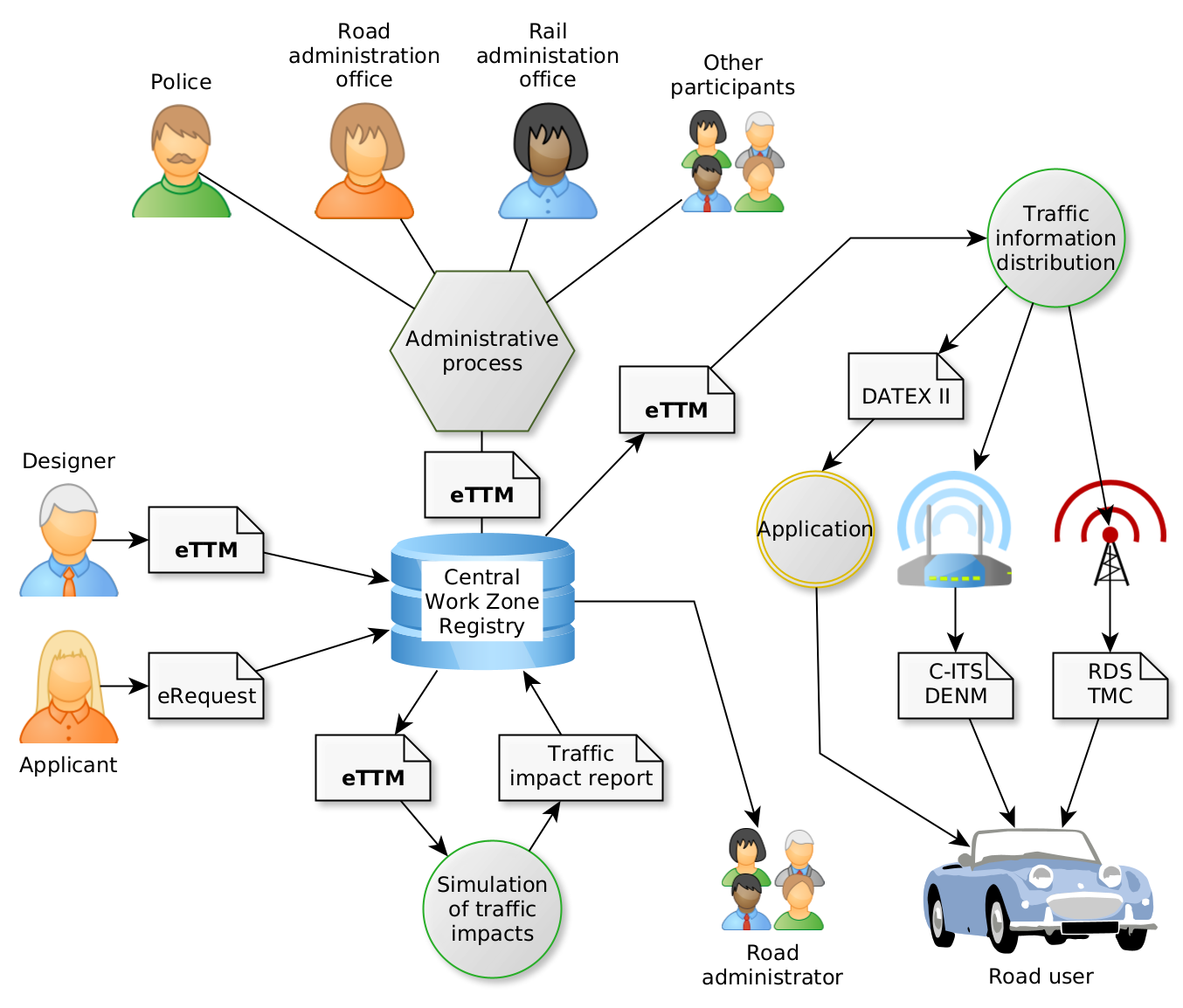
C-ZONE is working to make this a reality soon.

C-ZONE is working to make this a reality soon.

Temporary Traffic Management (TTM) is project documentation for the solution of the temporary traffic management on the road.
eTTM is electronic form of TTM
eRequest is an electronic form of request to approve eTTM
DATEX II, RDS-TMC and C-ITS DENM are examples of protocols and formats used to distribute traffic information.
Today, the approval process is governed by two traffic acts and two traffic regulation acts. The predominantly paper-based form of communication slows down the procedure. Therefore:
The work zones data are transferred into the Central Work Zone Registry manually, therefore:
The optimisation of processes, including the introduction of related legislative changes (merging into a joint procedure, modification of competences, negotiation with the rail administration office) and submitting the request in digital form will speed up and simplify processing:
The Central Work Zone Registry already receives documents in digital form, therefore:
The solution also allows for a gradual unification of the way work zones are designed, so similar traffic situations can be performed in the same way.
Designed with Mobirise free template